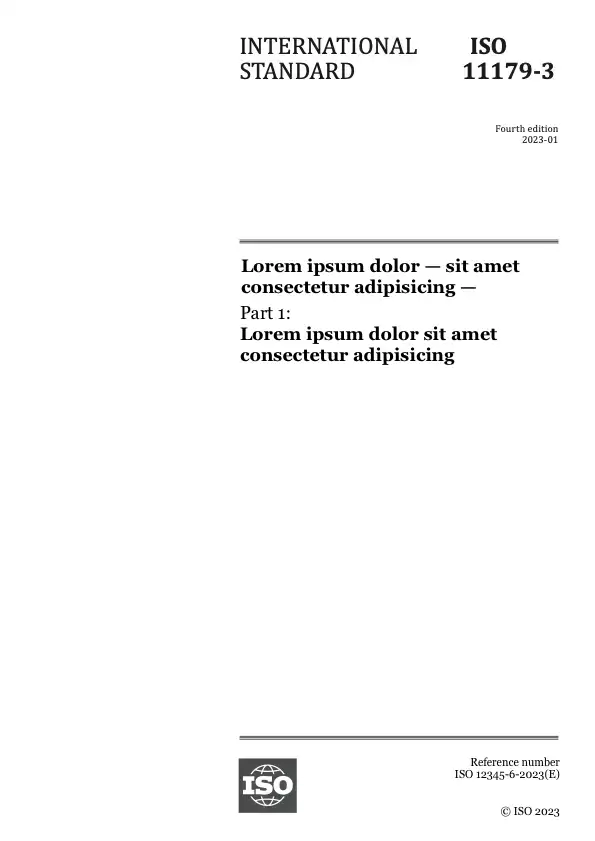Тезис
ISO/IEC 18000-6:2013 defines the air interface for radio frequency identification (RFID) devices operating in the 860 MHz to 960 MHz Industrial, Scientific, and Medical (ISM) band used in item management applications. It provides a common technical specification for RFID devices that can be used by ISO committees developing RFID application standards.
It is intended to allow for compatibility and to encourage inter-operability of products for the growing RFID market in the international marketplace. It defines the forward and return link parameters for technical attributes including, but not limited to, operating frequency, operating channel accuracy, occupied channel bandwidth, maximum effective isotropic radiated power (EIRP), spurious emissions, modulation, duty cycle, data coding, bit rate, bit rate accuracy, bit transmission order, and, where appropriate, operating channels, frequency hop rate, hop sequence, spreading sequence, and chip rate. It further defines the communications protocol used in the air interface.
ISO/IEC 18000-6:2013 together with ISO/IEC 18000-61, ISO/IEC 18000-62, ISO/IEC 18000-63 and ISO/IEC 18000-64 specifies the physical and logical requirements for a passive-backscatter, Interrogator-Talks-First (ITF) or tag-only-talks-after-listening (TOTAL) RFID system. The system comprises Interrogators, also known as readers, and tags, also known as labels. An Interrogator receives information from a tag by transmitting a continuous-wave (CW) RF signal to the tag; the tag responds by modulating the reflection coefficient of its antenna, thereby backscattering an information signal to the Interrogator. The system is ITF, meaning that a tag modulates its antenna reflection coefficient with an information signal only after being directed to do so by an Interrogator, or TOTAL, meaning that a tag modulates its antenna reflection coefficient with an information signal upon entering an Interrogator's field after first listening for Interrogator modulation in order to determine if the system is ITF or not.
ISO/IEC 18000-6:2013 contains one mode with four types. The detailed technical differences between the four types are shown in the associated parameter tables.
Types A, B and C are ITF. Type A uses Pulse-Interval Encoding (PIE) in the forward link and an adaptive ALOHA collision-arbitration algorithm. Type B uses Manchester in the forward link and an adaptive binary-tree collision-arbitration algorithm. Type C uses PIE in the forward link and a random slotted collision-arbitration algorithm.
Type D is TOTAL based on Pulse Position Encoding or Miller M=2 encoded subcarrier.
Preview
Общая информация
-
Текущий статус: ОпубликованоДата публикации: 2013-01Этап: Между-народный стандарт подлежит пересмотру [90.92]
-
Версия: 3
-
Технический комитет :ISO/IEC JTC 1/SC 31ICS :35.040.50
- RSS обновления
Жизненный цикл
-
Ранее
ОтозваноISO/IEC 18000-6:2010
-
Сейчас
ОпубликованоISO/IEC 18000-6:2013
Стандарт, который пересматривается каждые 5 лет
Этап: 90.92 (Будет пересмотрено)-
00
Предварительная стадия
-
10
Стадия, связанная с внесением предложения
-
20
Подготовительная стадия
-
30
Стадия, связанная с подготовкой проекта комитета
-
40
Стадия, связанная с рассмотрением проекта международного стандарта
-
50
Стадия, на которой осуществляется принятие стандарта
-
60
Стадия, на которой осуществляется публикация
-
90
Стадия пересмотра
-
95
Стадия, на которой осуществляется отмена стандарта
-
00
-
Будет заменено
В стадии разработкиISO/IEC CD 18000-6
Появились вопросы?
Ознакомьтесь с FAQ
Часы работы:
Понедельник – пятница: 09:00-12:00, 14:00-17:00 (UTC+1)

